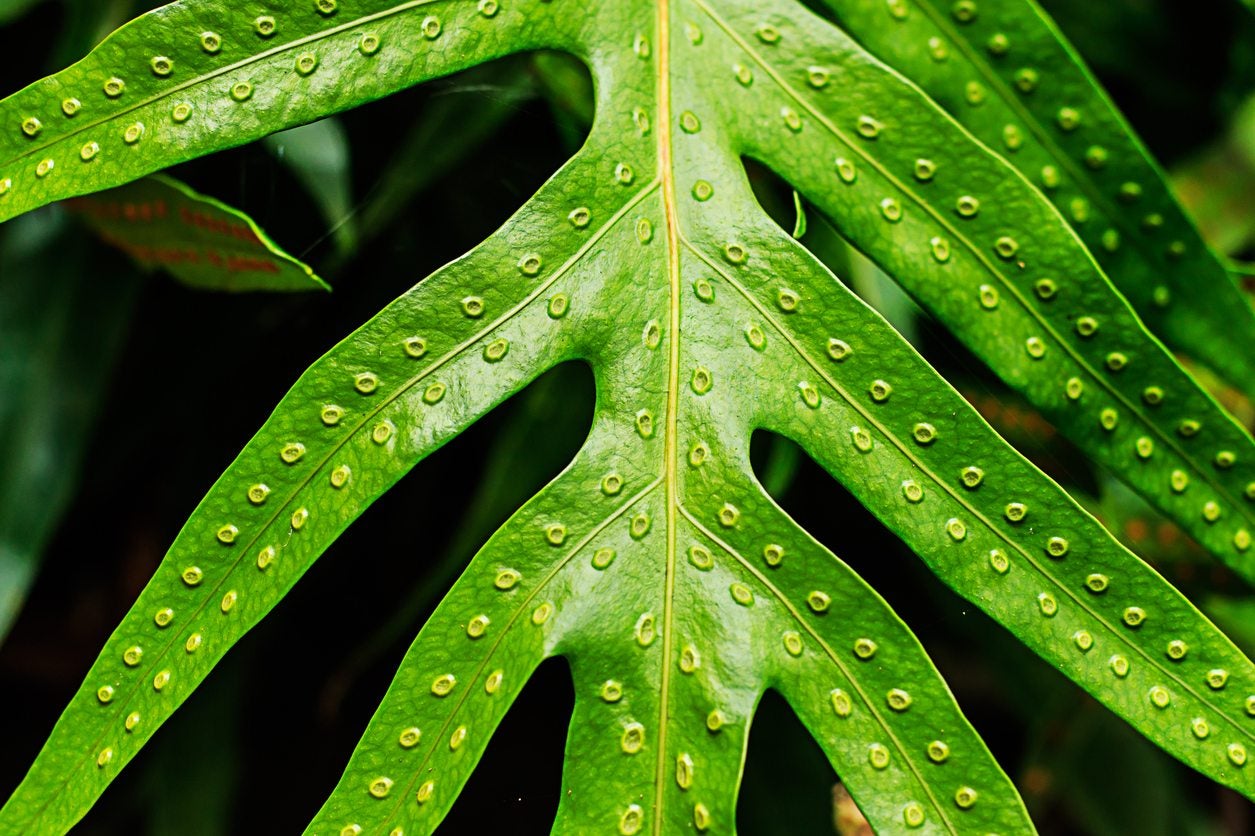Harvesting Staghorn Fern Spores: Tips On Gathering Spores On Staghorn Fern


Staghorn ferns are air plants– organisms that grow on the sides of trees instead of in the ground. They have two distinct kinds of leaves: a flat, round kind that grips to the trunk of the host tree and a long, branching kind that resembles deer antlers and earns the plant its name. It’s on these long leaves that you can find spores, the little brown bumps that open and spread the fern’s seed. Keep reading to learn more about how to collect spores from staghorn fern plants.
Gathering Spores on Staghorn Fern
Before you get too excited about propagating staghorn fern spores, it’s important to know that it’s far from the easiest propagation method. Division is much quicker and usually reliable. If you still want to collect spores and are willing to wait at least a year for results, it’s very doable. Spores on staghorn fern plants develop over the course of the summer. At first, they appear on the undersides of the long, antler-like fronds as green bumps. As the summer wears on, the bumps darken to brown – this is the time to harvest. The best way to collect spores on staghorn fern is to cut off one of the fronds and place it in a paper bag. The spores should eventually dry out and drop to the bottom of the bag. Alternatively, you can wait until the spores begin to dry on the plant, then scrape them away gently with a knife.
Staghorn Fern Spore Propagation
Once you have the spores, fill a seed tray with peat based potting medium. Press the spores into the top of the medium, making sure not to cover them. Water your seed tray from the bottom by setting it for a few minutes in a dish of water. When the soil is moist, remove it from the water and let it drain. Cover the tray with plastic and place it in a sunny spot. Keep the soil moist and be patient – it may take three to six months for the spores to germinate. Once the plants have a couple true leaves, transplant them into individual pots. It may take up to a year for the plants to establish.
Sign up for the Gardening Know How newsletter today and receive a free copy of our e-book "How to Grow Delicious Tomatoes".

The only child of a horticulturist and an English teacher, Liz Baessler was destined to become a gardening editor. She has been with Gardening Know how since 2015, and a Senior Editor since 2020. She holds a BA in English from Brandeis University and an MA in English from the University of Geneva, Switzerland. After years of gardening in containers and community garden plots, she finally has a backyard of her own, which she is systematically filling with vegetables and flowers.